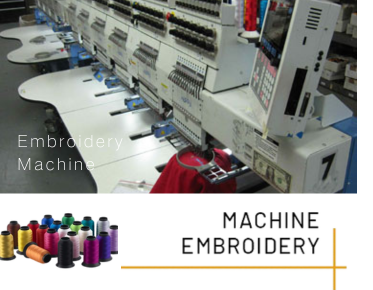The Importance of Stitch Path Order in Embroidery Digitizing
Embroidery digitizing is a meticulous art that transforms designs into digital files, which embroidery machines can interpret and stitch onto fabric. One of the critical aspects of this process is the stitch path order. The sequence in which stitches are laid down can significantly impact the final outcome of the embroidery, affecting both the aesthetic quality and the structural integrity of the design.
Understanding Stitch Path Order
The stitch path order refers to the sequence in which the embroidery machine stitches the design. This order is not arbitrary; it is carefully planned to ensure that the design is executed efficiently and effectively. Proper stitch path planning can prevent issues such as thread breaks, puckering, and misalignment, which can compromise the quality of the embroidery.
Why Stitch Path Order Matters
There are several reasons why the stitch path order is crucial in embroidery digitizing:
- Minimizing Thread Breakage: A well-planned stitch path reduces the stress on the thread, minimizing the chances of breakage. This is particularly important for complex designs with multiple colors and intricate details.
- Ensuring Design Alignment: The stitch path order helps maintain the alignment of the design elements. By stitching from the center outwards or from larger areas to smaller details, digitizers can prevent distortion and ensure that the design remains true to its original form.
- Optimizing Machine Efficiency: A logical stitch path can reduce the number of thread trims and color changes, which speeds up the embroidery process and reduces wear on the machine.
Impact on Design Quality
The quality of an embroidery design is heavily influenced by the stitch path order. A poorly planned path can lead to visible flaws, such as gaps between stitches or uneven tension, which detract from the design's appearance. Conversely, a well-executed stitch path enhances the design's visual appeal and durability.
Role of Digitizing Software
Modern digitizing software plays a vital role in determining the stitch path order. These programs offer tools that allow digitizers to manually adjust the sequence of stitches, ensuring optimal results. Advanced software can also automate some aspects of the process, suggesting efficient paths based on the design's complexity and the fabric type.
Case Study: Eagle Digitizing
Eagle Digitizing is a leader in the field of embroidery digitizing, known for their meticulous attention to detail and high-quality outcomes. Their expertise in planning stitch paths ensures that each design is executed flawlessly, minimizing thread breakage and maximizing machine efficiency. This attention to detail is a hallmark of their service, providing clients with reliable and visually stunning embroidery results.
Practical Tips for Digitizers
For those involved in embroidery digitizing, understanding and implementing effective stitch path strategies is essential. Here are some practical tips:
- Plan Ahead: Before starting the digitizing process, analyze the design to determine the most efficient stitch path. Consider factors such as color changes, stitch density, and fabric type.
- Use Software Tools: Leverage the capabilities of digitizing software to optimize the stitch path. Utilize features that allow for manual adjustments and automation to enhance the design's quality.
- Test and Revise: Always test the digitized design on a sample fabric before final production. This allows you to identify and correct any issues with the stitch path, ensuring the best possible outcome.
Future Trends in Embroidery Digitizing
As technology continues to evolve, the field of embroidery digitizing is poised for exciting advancements. Innovations in software and machine capabilities will further enhance the precision and efficiency of stitch path planning. Digitizers will have access to more sophisticated tools, enabling them to create even more intricate and high-quality designs.
In conclusion, the stitch path order is a fundamental aspect of embroidery digitizing that directly impacts the quality and efficiency of the final product. By understanding its importance and utilizing advanced tools and techniques, digitizers can ensure that their designs are both beautiful and durable. As the industry continues to evolve, staying informed about the latest trends and technologies will be key to maintaining a competitive edge in the market.



